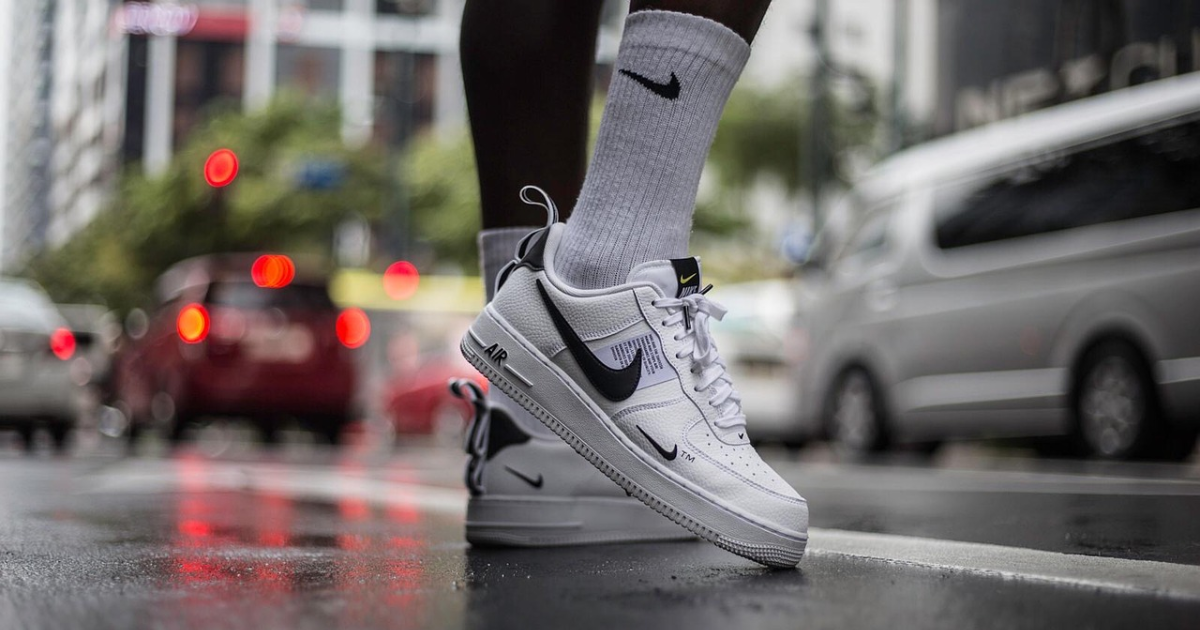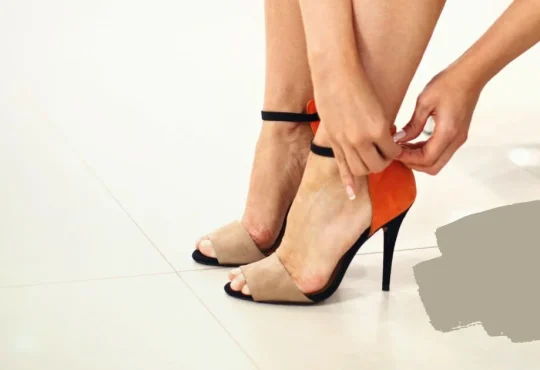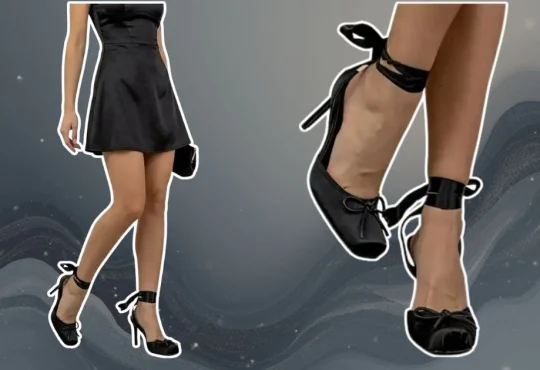The footwear of the future has arrived—and it’s a far cry from simple soles and laces. In 2025, smart shoes are more than just wearable tech—they’re intelligent companions that analyze movement, enhance athletic performance, protect your health, and even connect to the digital world. What was once science fiction is now mainstream, and people from athletes to tech enthusiasts to casual walkers are strapping in.
A Step Beyond Fashion: What Are Smart Shoes?
Smart shoes are footwear embedded with cutting-edge technology like pressure sensors, accelerometers, gyroscopes, Bluetooth modules, and even AI processors. Unlike traditional sneakers or running shoes, these are designed for comfort, support, insight, and interaction. They collect data in real-time, interpret it, and provide feedback either through a connected app or through haptic cues built directly into the shoe.
Whether it’s counting steps more precisely than a wristwatch, analyzing gait and posture, or customizing cushioning levels mid-run, these shoes are transforming the way people think about movement.
Core Functions and Features That Make Smart Shoes Stand Out
1. Real-Time Gait and Posture Analysis
Smart shoes with embedded pressure sensors and inertial measurement units (IMUs) deliver unprecedented biomechanical insight. These tiny yet powerful components track how weight is distributed across the foot with every step, jump, pivot, or stance. The system continuously monitors foot strike patterns, pronation levels, and center-of-mass shifts—data that is otherwise difficult to capture outside a professional lab.
More advanced models even analyze asymmetry in stride, toe-off timing, and lateral stability, generating a precise motion profile tailored to the individual. Over time, AI algorithms compare the user’s gait patterns against baselines, detecting early signs of fatigue, overuse, or poor alignment.
Why it matters:
- For athletes, this analysis can reveal inefficiencies or bad habits that shave seconds off race times or increase injury risk. Coaches can use this data to adjust training plans, improve agility, and build long-term joint health.
- For older adults and individuals in physical therapy, smart shoes act as real-time guardians. By flagging irregular balance shifts or foot drag, the system can help prevent falls before they happen, supporting safer rehabilitation and mobility independence.
- The shoes become a portable diagnostic tool for clinicians, offering remote insight into patient recovery without bulky gait labs.
2. Fitness Tracking Without the Wristband
Positioned at the foundation of movement, smart shoes provide more accurate and nuanced fitness data than traditional wrist-worn devices. While smartwatches and fitness bands rely heavily on arm motion and guesswork, smart shoes measure impact force, ground contact time, stride length, and actual foot displacement to paint a fuller picture of physical activity.
The metrics collected include:
- Steps: More precise than wrist swings, capturing subtle movements like stair climbing or walking with a stroller.
- Distance and Speed: GPS integration with stride-based calibration ensures accurate pacing in real-world conditions.
- Elevation: Altitude sensors in the sole record vertical gains for hill runs or hikes.
- Calories Burned: More accurate calculations based on real-time effort and biomechanical strain.
Some models also sync with heart rate monitors or include embedded thermometers and sweat sensors, giving a 360-degree view of physical exertion.
Bonus:
Unlike smartwatches, which users may forget to wear or charge, smart shoes are intuitive and always part of the outfit—no extra effort is required. Just lace up and go.
3. AI-Powered Coaching and Feedback
Smart shoes in 2025 are no longer passive data collectors but intelligent performance coaches. Embedded with AI systems and machine learning algorithms, these shoes recognize individual habits, performance thresholds, and biomechanical patterns. Over time, they evolve with the wearer, delivering more precise and helpful guidance with each session.
Here’s how the AI coaching unfolds:
- In-Workout Alerts: When pace drops unexpectedly, or foot placement strains joints, the shoes gently vibrate or issue audio feedback via a connected app.
- Corrective Suggestions: Improper squat depth, uneven lunges, or misaligned push-off mechanics trigger subtle alerts that help users adjust quickly.
- Recovery Guidance: Post-workout, the AI offers cool-down routines, suggests rest periods, and analyzes fatigue levels based on stride degradation.
Key applications include:
- Distance runners aim to refine stride efficiency for longer endurance or faster sprints.
- Gym-goers and strength athletes use form correction cues to avoid injury during deadlifts, squats, or box jumps.
- Dancers, martial artists, and sports professionals use precision movement analysis to enhance footwork, reduce impact stress, and master subtle technique changes.
- What sets these AI systems apart is their ability not just to react, but to learn. They adapt to changing fitness goals, detect performance plateaus, and even account for different terrains or workout styles.
4. Self-Lacing and Adaptive Fit Systems
What was once the stuff of science fiction has quietly become a high-tech reality. Drawing inspiration from films like Back to the Future Part II, brands like Nike and Puma have engineered self-lacing shoes that automatically conform to the wearer’s foot with precision-engineered tension systems.
These adaptive fit systems use a combination of micro-motors, tension sensors, and intelligent firmware to fine-tune the snugness of the shoe in real-time. The moment the foot enters the shoe, it automatically tightens around it, offering a fit that’s neither too loose nor constricting. The system adjusts as needed throughout the day, responding to swelling, motion, or temperature shifts.
Why this matters:
- No more laces, no more hassle: Eliminates the risk of tripping over untied laces during intense activities or daily errands.
- Long-term wear comfort: Beneficial during extended workouts, flights, or walking commutes where foot size may subtly change due to blood flow or ambient temperature.
- Dynamic response to activity: During a run, the fit tightens for support; during recovery, it loosens slightly for breathability.
Some models even allow manual override via smartphone apps or smartwatch widgets, where users can fine-tune tightness down to millimetre precision, creating a personalized experience that evolves with each movement.
5. Navigation and Haptic Guidance
Smart shoes aren’t just about fitness—they’re stepping into the realm of intelligent wayfinding. Using GPS connectivity and finely tuned haptic actuators, smart shoes can guide users with discreet, foot-based vibrations. Instead of looking down at a phone or listening to distracting audio cues, wearers feel the direction intuitively through their soles.
How it works:
- A buzz in the left shoe signals a left turn ahead.
- Two short pulses in both shoes might signal a wrong route.
- A sustained vibration might indicate arrival or a change in path.
This feature is especially transformative for:
- Cyclists and urban commuters: Keep eyes on the road and hands on the handlebars while still receiving GPS directions.
- Tourists or hikers: Navigate unfamiliar cities or wilderness trails without constantly pulling out a phone or map.
- Visually impaired users: Gain spatial awareness and mobility confidence without relying on auditory instructions or a guide.
- The tactile nature of haptic feedback gives users a more intimate, intuitive connection with their surroundings, blending navigation seamlessly into their natural stride.
Integration with Smart Ecosystems
Smart shoes don’t exist in isolation. They now sync with:
- Wearable health monitors (like smartwatches or rings)
- Fitness apps (like Strava, Nike Run Club, or Apple Health)
- Smart homes (auto-unlock doors upon arrival or trigger lighting scenes)
- Augmented and Virtual Reality platforms (simulate movement for gaming or training)
This makes them part of a larger connected lifestyle, amplifying their utility across health, convenience, and entertainment.
The Road Ahead: What’s Next for Smart Footwear?
As technology advances, smart shoes are evolving in several key directions:
– Energy Harvesting
Future iterations may power themselves by converting footstrike energy into electricity, eliminating the need for charging altogether.
– Medical Monitoring
Prototypes that track hydration levels, temperature changes, and even glucose levels through skin contact and sweat analysis are emerging.
– Environmental Awareness
Some bright soles now detect air quality, temperature, and terrain type, adapting grip or cushioning for the best experience.
– Fashion-Tech Fusion
Luxury brands collaborate with tech companies to design fashion-forward smart shoes that don’t look like tech but still pack intelligent features.
Why the Obsession?
The explosive fascination with smart shoes isn’t just a passing tech trend—it’s the convergence of several deep-rooted cultural and technological desires. These shoes are more than footwear; they’re wearable command centers built for a generation obsessed with optimization, self-awareness, and frictionless living.
1. Personalized Health at Every Step
In an age where wellness is hyper-individualized, smart shoes offer unprecedented personal health data. Every step becomes a diagnostic tool. Whether tracking how the heel strikes pavement or identifying early signs of imbalance, these shoes turn everyday motion into insights for injury prevention, fitness gains, and therapeutic recovery. They answer the craving for health tech that doesn’t feel like medical equipment, but works like it.
2. Seamless, Screen-Free Convenience
Smartphones often steal attention and clutter experiences. Smart shoes, by contrast, fade into the background while doing more. Whether providing haptic directions, logging workouts, or tightening automatically, they support daily life without demanding it stop. This hands-free, heads-up functionality offers digital freedom—a way to stay connected without being consumed.
3. The Wearable Tech Evolution
Smartwatches and fitness bands started the revolution, but smart shoes represent the next frontier: technology embedded where movement originates. Unlike wrist wearables that approximate motion, smart shoes measure from the ground up with higher accuracy and more natural integration. They’re not worn on the body—they’re part of it.
4. Data-Driven Performance Enhancement
Data is king in sports, fitness, and rehabilitation, and smart shoes are real-time performance labs. By merging biomechanics with AI, they provide tailored coaching, feedback loops, and even real-time corrections during activity. These shoes offer a constant edge for those who live by metrics—athletes, trainers, or even goal-oriented casual users.
5. Futuristic Appeal and Cultural Status
Let’s face it—there’s also the wow factor. Self-lacing, motion-reactive footwear sounds like science fiction made real. It appeals to the tech-savvy, the fashion-forward, and those who crave the following “it” item. From glowing accents to minimalist silhouettes with embedded circuitry, smart shoes carry the same cool cachet once reserved for the first iPhone or AirPods.
Where Innovation Meets Every Step
Smartphones may have connected the hands to the internet, but smart shoes connect the feet to the digital ecosystem. Turning every step into data, insight, or action redefines what it means to walk, run, or move in a modern world.
The obsession isn’t just about technology, empowerment, precision, and possibility. And if current trends indicate, tomorrow’s most crucial tech accessory might not be in a pocket, but on foot.




